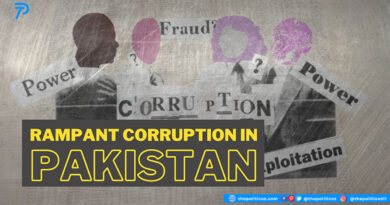CHINA-AND-TAIWAN CONFLICT
China and Taiwan Conflict
China and Taiwan conflict is crucial to understand international peace and security. According to historical records, Taiwan was part of different dynasties, i.e. Dutch Rule, Qing Dynasty, Japan, and China. Japan took over Taiwan in 1895, and after World War Two in 1945, China regained the region when the USA dropped Atom Bomb on Japan. At that period, China was under the leadership of Chiang Kai-Shek. He was a nationalist and military dictator. These were the days when communist leader Mao Zedong became popular in China. The Chinese Civil War was on the rise between Chiang Kai-Shek and Mao Zedong, which communist leader Mao Zedong won with the help of the USSR.

Interestingly the Republic of China was an ally of the USSR. Still, they provided no help to Kuomintang Nationalist Party, and Communist leader Mao Zedong established the People’s Republic of China. Chiang Kai-Shek went to Taiwan and imposed Martial Law. Moreover, both claimed to be the real China for a while. The battle for international recognition begins here; only 14 western countries, including Vatican City, recognized the Republic of China as an independent state.
The Situation of Taiwan
Taiwan is situated in the string of islands or the so-called First Island Chain, barely 160 Kilometres from the east coast of the People’s Republic of China, which is considered the most crucial for the foreign policy of the USA. Because if china manages to take over Taiwan, it could even threaten US military bases based in Hawaii and Guam in the Western regions of the USA. Until now, China has not intended to attack the United States of America.

Taiwan and China are at War
In 1954, the first China and Taiwan Conflict started when Chiang Kai-shek put thousands of troops on two Taiwanese islands, Kinmen and Matsu. This crisis lasted for a few years, and the second Taiwan Strait crisis began in 1958 when Mao Zedong bombed both islands and dislodged the troops from the islands.
In 1971, the People’s Republic of China was recognized as the only legitimate representative of china to the UNO. Back in the day, the USA had good relations with China.
American delegations visited China, and the Chinese Ping-Pong team went to the USA; hence it was called Ping-Pong Diplomacy. It was the first semi-official delegation of both parties, and the ban removed lifted restrictions from travel and trade and also lifted restrictions on work and travel.
In 1975, communist leader Mao Zedong died, and after one year, in 1976, Chiang Kai-shek also left the world. For approximately ten years, Taiwan and China had good relations. China eased travel restrictions and cultural activities; people were allowed to visit their relatives. Economic ties deepened so did cultural divisions.
CONSENSUS OF 1992
A meeting was held in 1992 in Hong Kong when both parties agreed on “One China”. Which means both political entities would work together as one country. China’s version of one china was that both sides of the strait should be governed or controlled by Beijing, and both parties would work together for the reunification of China and Taiwan, but the problem was that of an unwritten agreement.
Taiwan understood it differently. On May 20-2000, Chen Sui-ben was elected as the Republic of China’s president, a member of the Progressive Democratic Party, and he openly backed Taiwanese independence. China was not ready for this, and in 2005 Beijing enacted the Anti-Succession Law, which means china could use force to keep Taiwan.
The reaction to the anti-succession law was the Sun-Flower Movement in 2014 in front of the Taiwanese General Assembly. It was the first open protest by Taiwanese students.
STANCE OF THE USA
In 1979, the USA established official diplomatic relations with the Republic of China (Taiwan) and signed a mutual defense treaty, and later on, it was rescinded by the USA. Still, the United States of America maintained full-bodied relations and was selling weapons to the Republic of China. Beijing warned the USA not to sell weapons to ROC.
Moreover, US speaker Nancy Pelosi landed in Taiwan on August 2 2022, which the People’s Republic of China highly condemned. In reaction to this visit, china launched at least 11 ballistic missiles within the territory of Taiwan, apprising the USA not to interfere in internal matters of China.
China and Taiwasn Conflict summary
The People’s Republic of China claims the Taiwanese territory based on historical records and the meeting held in 1992 in Hong Kong. China has a great interest in Taiwan, as Taiwan has abundant natural resources and is a chip superpower country.
Taiwan Semiconductor Manufacturing Company manufactures chip sets for mobiles, laptops, and computers, which holds almost 65% of the world market. Both regions have ideological differences; China is a communist state, while Taiwan is one of the best democracies in the world. Taiwan has a dynamic and pluralistic society, while the Chinese Government is considered totalitarian. 62% of People living within the territory of Taiwan call themselves Taiwanese, whereas only 3% consider themselves Chinese. 5.2% of people want independence as soon as possible.
Latest Content on the issue in 2023:
Despite ongoing tensions, a senior Taiwan opposition leader will visit China.
In the midst of ongoing military and political tensions between the two countries, the Kuomintang (KMT), Taiwan’s largest opposition party, said on Monday that a senior member will travel to China this week to meet with the country’s top Taiwan policymaker.
China has increased pressure on Taiwan over the past three years to recognize Chinese sovereignty, particularly by conducting regular military exercises close to the island’s democratically run government. China’s territorial claims are rejected by the government of Taiwan.
Shoeb Hasan Laghari |Masters in Political Science





Top site ,.. amazaing post ! Just keep the work on !